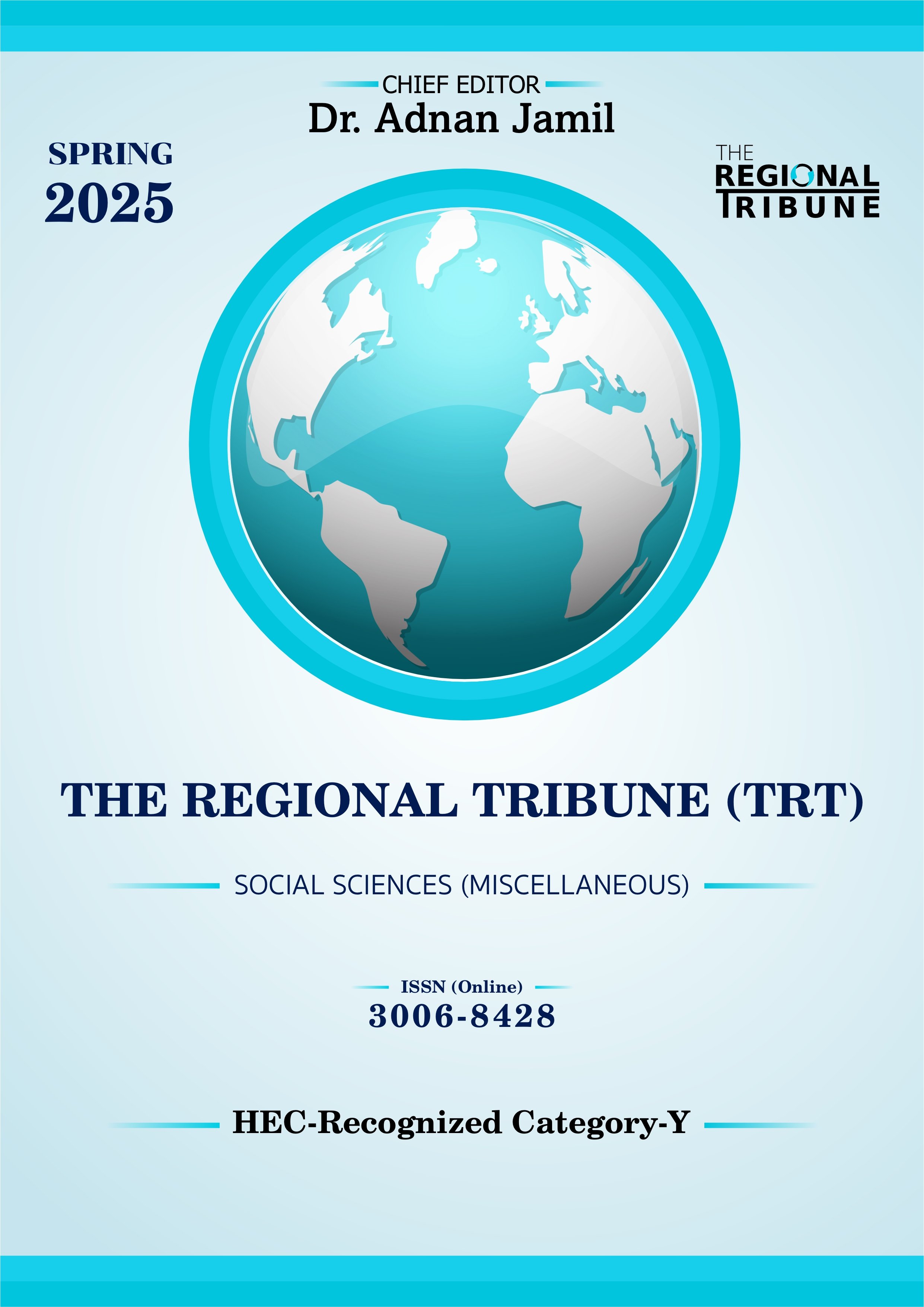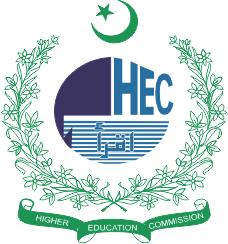An Investigation into the Effectiveness of Icts in the Teaching of Chemistry
DOI:
https://doi.org/10.63062/trt/SG25.090Keywords:
Effectiveness, ICTs, Teaching, Chemistry, Secondary LevelAbstract
Classroom Teaching strategies in the modern world have transformed from teacher-centered to student-centered. The importance of Information Communication Technologies (ICTs) has increased manifold in teaching abstract sciences like Chemistry in this new era. Information and communication technologies offer students a visual representation of abstract concepts, which is not possible with traditional teaching methodologies. Therefore, this experimental study investigates the effectiveness of Information and Communication Technologies (ICTs) on the teaching of Chemistry in secondary schools. The current study was conducted at the Government Higher Secondary School, Charbagh, in the Swat District, Pakistan. A pretest was designed, termed the 'Chemistry Achievement Test' (CAT). The population of this study consisted of 52 students of F.Sc (pre-medical). These students were assigned to two groups (experimental and control groups), each containing 26 students, based on their pretest results. Lesson plans were developed for both control and experimental groups for the specified period. Posttests were conducted after the delivery of the instructions with traditional and ICT-integrated methodologies, and the obtained data were analyzed with Standard deviation, mean, and paired sample t-test. In terms of the academic achievements of students, the results from this study confirmed that ICT-integrated teaching is more effective than traditional methods in Chemistry at the secondary level.
References
Albayrak, D., & Yildirim, Z. (2015). Using social networking sites for teaching and learning: Students' involvement in and acceptance of Facebook® as a course management system. Journal of Educational Computing Research, 52(2), 155-179. https://doi.org/10.1177%2F0735633115571299
Athanasios, C., Sprangers, P., & Wang, S. (2021). Integration of educational technology during the Covid-19 pandemic: An analysis of teacher and student receptions. Cogent Education, 8, 1. https://doi.org/10.1080/2331186X.2021.1964690
Avinash, A., & Shailja, S. (2013). The impact of ICT on achievement of students in chemistry at the secondary level of CBSE and up the board in India. International Journal of Science and Research, 2(8), 126-129.
Balasubramanian, K., Clarke-Okah, W., Daniel, J., Ferreira, F., Kanwar, A., Kwan, A., West, P. (2009, July). ICTs for Higher Education. Background paper from the Commonwealth of Learning UNESCO World Conference on Higher Education. UNESCO World Conference on Higher Education, Paris, 5 to 8, 2009. http://unesdoc.unesco.org/images/0018/001832/183207e.pdf
Baş, G., Kubiatko, M., & Sünbül, A. M. (2016). Teachers’ perceptions towards ICTs in teaching-learning process: Scale validity and reliability study. Computers in Human Behavior, 61, 176–185. https://doi.org/10.1016/j.chb.2016.03.022
Bocconi, S., Balanskat, A., Kampylis, P., & Punie, Y. (2013). Overview and analysis of learning initiatives in Europe. Luxembourg: European Commission.
Chen, L., Chen, P., & Lin, Z. (2020). Artificial Intelligence in Education: A Review. IEEE Access, 8, 75264–75278. https://doi.org/10.1109/ACCESS.2020.2988510
Cuckle, P. & Clarke, S. (2002). Mentoring student-teachers in schools: views, practices and access to ICT. Journal of Computer Assisted Learning, 18(4), 330-340. https://doi.org/10.1046/j.0266-4909.2002.00244.x
Daza Pérez, E. P., Gras-Marti, A., Gras-Velázquez, A., Guerrero Guevara, N., Togasi, G., Joyce, A., Mora-Torres, A., Pedraza, E., Ripoll, Y., & Santos, J. (2009). Experiencias de enseñanza de la química con el apoyo de las TIC [Chemistry teaching experiences with the support of ICT]. Educación Química, 20(3), 320–329. https://doi.org/10.1016/S0187-893X(18)30032-6
Ferreira et al., (2014). Educational technology and educational management in the higher education: New ways of forming professionals. Open Journal of Social Sciences, 2(2), 7-11. https://10.4236/jss.2014.22002
Fraillon, Fraillon, J., Ainley, J., Schulz, W., Friedman, T., & Gebhardt, E. (2014). Preparing for life in a digital age: The IEA International Computer and Information Literacy Study international report (p. 308). Springer Nature. https://doi.org/10.1007/978-3-319-14222-7
Ghavifekr, S., Razak, A. Z. A., Ghani, M. F. A., Ran, N. Y., Meixi, Y., & Tengyue, Z. (2014). ICT integration in education: Incorporation for teaching & learning improvement. Malaysian Online Journal of Educational Technology, 2(2), 24-45.
Gudmundsdottir, G. B., & Hatlevik, O. E. (2018). Newly qualified teachers’ professional digital competence: Implications for teacher education. European Journal of Teacher Education, 41(2), 214–231. https://doi.org/10. 1080/02619768.2017.1416085
Han, I., Shin, W. S., & Ko, Y. (2017). The effect of student teaching experience and teacher beliefs on pre-service teachers’ self-efficacy and intention to use technology in teaching. Teachers and Teaching: Theory and Practice, 23(7), 829–842. https://doi.org/10.1080/13540602.2017.1322057
Hung, H.-T., & Yuen, S. C.-Y. (2010). Educational use of social networking technology in higher education. Teaching in higher education, 15(6), 703-714. doi: https://doi.org/10.1080/13562517.2010.507307
Krause et al., (2017). Differences and developments in attitudes and self-efficacy of prospective chemistry teachers concerning the use of ICT in education. Eurasia Journal of Mathematics, Science and Technology Education, 13(8), 4405-4417. https://doi.org/10.12973/eurasia.2017.00935a
Lux, N., Obery, A, Cornish, J., Grimberg, B.I., & Hartshorn, A. (2017). Reflecting on the challenges of informal contexts: early field experience with technology in teacher’s education. Contemporary Issues in Technology and Teacher Education, 17(2), 250-262. https://www.learntechlib.org/primary/p/173652/
Mayer, R. E. (2002). Multimedia learning. In Psychology of learning and motivation 41, 85-139. Academic Press.
Moreno, R. & Mayer, RE (1999). Cognitive principles of multimedia learning: The role of modality and contiguity. Journal of Educational Psychology, 91, 358-368. https://psycnet.apa.org/doi/10.1037/0022-0663.91.2.358
Nkomo, L. M., Daniel, B. K., & Butson, R. J. (2021). Synthesis of student engagement with digital technologies: a systematic review of the literature. International Journal of Educational Technology in Higher Education, 18(1), 34. https://doi.org/10.1186/s41239-021-00270-1
Prestridge, S. (2012). The beliefs behind the teacher that influences their ICT practices. Computers & Education, 58(1), 449–458. https://doi.org/10.1016/j.compedu.2011.08.028
Pultoo, A., Bullee, A., Meunier, J. N., Sheoraj, K., Panchoo, S., Naseeven, P., ... & Oojorah, A. (2020). Classe21. Educators’ acceptance of technology-enhanced classroom using the UTAUT model. Journal of Education and Social Sciences, 14(1), 39-48.
Ramirez-Montoya, M., Mena, J., & Rodriguez-Arroyo, A. (2017). In-service teachers’ self-perceptions of digital competence and OER use as determined by a xMOOC training course. Computers in Human Behavior, 77, 356-364. https://doi.org/10.1016/j.chb.2017.09.010
Rasiah, R. R. V. (2014). Transformative higher education teaching and learning: Using social media in a team-based learning environment. Procedia-Social and Behavioral Sciences, 123, 369-379. doi: https://doi.org/10.1016/j.sbspro.2014.01.1435
Sang, G., Valcke, M., van Braak, J., Tondeur, J., & Zhu, C. (2011). Predicting ICT integration into classroom teaching in Chinese primary schools: Exploring the complex interplay of teacher-related variables. Journal of Computer Assisted Learning, 27(2), 160–172. https://doi.org/10.1111/j.1365-2729.2010.00383.x
Uluyol, Ç., & Şahin, S. (2016). Elementary school teachers’ ICT use in the classroom and their motivators for using ICT. British Journal of Educational Technology, 47(1), 65–75. https://doi.org/10.1111/bjet.12220
Ware, S. A. (2001). Teaching chemistry from a societal perspective. Pure and Applied Chemistry, 73(7), 1209–1214. https://doi.org/10.1351/pac200173071209
Downloads
Published
Issue
Section
License

This work is licensed under a Creative Commons Attribution-NonCommercial 4.0 International License.



